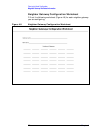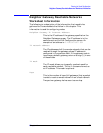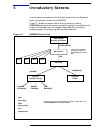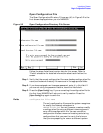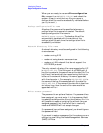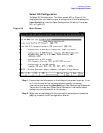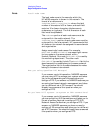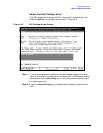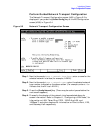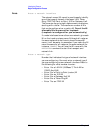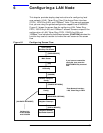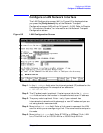
84 Chapter5
Introductory Screens
Begin Configuration Process
Fields Local node name
The local node name is the name by which the
HP e3000 computer is known in the network. The
format of a node name is
nodename.domain.organization where the total
number of characters is 50 or fewer, and each field
contains 16 or fewer characters (alphanumeric,
underscore, or hyphens). The first character of each
field must be alphabetic.
The nodename portion of each node name must be
unique within the node’s network. The
nodename.domain portion of each node name must be
unique within the internetwork. HP recommends that
all nodes on the network be assigned the same domain
and organization.
Assign meaningful node names. For example,
MKTG.BND.HP and LAB.BND.HP are meaningful names
for two nodes on the same network within
Hewlett-Packard. One node (MKTG.BND.HP) is used by
the marketing department. The other node
(LAB.BND.HP) is used by the lab. The domain field is the
same because the nodes belong to the same network.
The organization field is the same because the nodes
belong to the same internetwork.
Are you using OpenView DTC Manager?
If you answer yes to this question, NMMGR assumes
you are using a PC to manage your system and takes
you to the corresponding set of screens when you
configure DTS. If you answer no, NMMGR assumes you
are using host-based network management and takes
you to a different set of DTS screens. You should
already have answered this question when you
configured DTS.
Do you have X.25 system- to-system or PAD connections?
If you answer yes to this question, NMMGR assumes
you are configuring X.25 connections and takes you to
the set of screens required to configure DTC X.25
Network Access Cards when you configure DTS. If you
answer no, NMMGR assumes you have no need to
configure X.25 connections and takes you to a different
set of DTS screens. You should already have answered
this question when you configured DTS.



